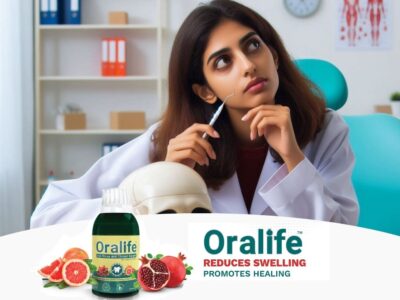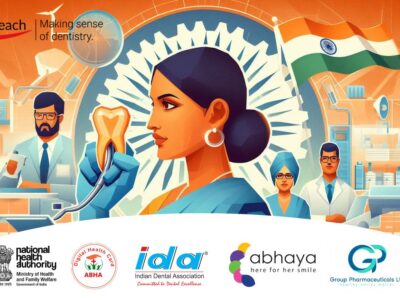A lot of clinicians dream of an implant driven practice, mainly because they expect the income in the clinic to skyrocket, especially with full mouth implant cases. While I don’t deny that implants can be lucrative and do showcase clinical skills of the practitioner, there are many a slip between the cup and the lip.

Implants are the best replacement for a missing tooth. It osseointegrates to the bone like no other, and unlike an FPD, it does not require the support of adjacent natural teeth. i.e., one does not have to “cut” sound natural teeth, to replace one single missing tooth. But this is also a double-edged sword.
The very property of osseointegration requires sound bone of D1 or D2 quality to be present. That is, if one wants the implant placement procedure to be straight forward and hassle-free. But what happens when we don’t have the requisite bone available? Do we go ahead and plan a conventional FPD? Or do we do additional procedures such as sinus lifts, bone augmentation, zygomatic or basal implants? Or how about RPD’s. Are they really obsolete?
Now, this is a pretty complex topic and goes beyond the implant mechanics, bone availability and clinician’s skills. For me, it boils down to two things –
- what does the patient want?
- what is the investment versus return for all the above procedures?
Now, the patient’s wants and needs may not always be aligned. For e.g., they may want an implant, but do not have the requisite bone and at the same time do not want to spend for it. Some may be open to spending for an implant, but only if its straight forward – they are not interested in procedures like sinus lift, ridge splits or zygomatic implants. For others, they may tell the clinician to decide what’s best. The last category is the most dangerous I feel, because as long as everything goes right, there is no issue, but when things start to go wrong, that’s when the blame-game starts!
As a clinician, we must offer all options to the patient, and the pros and cons of each procedure. Let the patient decide. This way, we have an exit strategy, because we all know as clinicians, that despite our best efforts, things can and do go wrong, if not immediately, in the distant future. I avoid promising the sun and the moon to patients, especially statements like – “it will last you your whole life!”. But the next question I get is – Isn’t that true of implants? Once osseointegrated, do they not last one’s entire life?
So, what are all the potential issues we will face as clinicians, even in well osseointegrated implants?
- Peri implantitis
- Implant fracture
- Screw fracture in screw retained implant crowns
- Crown fracture in cement retained crowns
(Both the above scenarios can take place several years after placement in which case the component parts may or may not be available)
- Cold welding of abutment and crown due to excessive torquing
- Fracture of connecting bars
- Fracture of the prosthesis especially in FP3 &FP4
- Food lodgement beneath FP3 prosthesis
- Development of systemic conditions hampering longevity of the prosthesis like uncontrolled diabetes mellitus or substance abuse.
So as seen above, barring cold welding, which is an operator error, the majority of other issues that take place rest on the patient’s misuse and lack of maintenance. The latter is something that even the best patients are susceptible to, for they are only human. Logically, we should be charging for all procedures that arise due to the patient’s misuse or neglect, but in reality, that’s not so.
In order to maintain good will with our patients (and in the era of unfair negative reviews on social media) we practically cannot charge our patients for every single procedure. We do and have ended up doing a lot of minor procedures or consultations either free or at no profit and no loss. This is the hard truth, for dental treatment is an elective procedure and cannot compare to the lakhs a patient may spend on open heart surgery, with no questions asked. By now, you as readers must have caught on to how implants often end up being high investment and low return treatment options, a fact that a lot of seasoned implant practitioners, privately admit to.
That said, does that mean that implants are a big no-no? Not necessarily. There are certain situations where implants end up being the best option if the patient wants only fixed teeth such as:
- Replacement of a missing canine as a canine should not be replaced by an FPD, both due to its unique position in the arch and the fact that the lateral incisor cannot perform the role of an abutment adequately.
- Missing second molars as cantilever posterior FPD’s are a big no-no.
At the same time, there are certain situations where FPD’s or a removable prosthesis would perform better than implants such as:
- When the natural teeth adjacent to the site of the missing tooth, require full coverage with crowns due to extensive damage to tooth structure.
- In situations where there are several missing teeth and very few natural teeth present, it is always better to preserve the remaining natural teeth and halt further residual ridge resorption by either providing the patient with removable partial dentures or tooth supported overdentures, rather than extracting all remaining natural teeth just so that the clinician can treat it as a full mouth implant case.
Well done partial dentures, precision attachments, overdentures or even metal free FPD’s are low investment and high return treatment options, as compared to multiple implant cases. In many cases, the returns can be as much as one would get upon implant placement, with less post operative hassles, for these procedures are far less technique sensitive and tolerate misuse and lack of maintenance by the patient, a lot better.
A well-done removable prosthesis does give back to the patient; confidence, ability to smile, ability to taste as well as chew their food. In that respect, they perform as well as FPD’s or implants, and sometimes that’s all the patient cares about – a treatment option which gives them maximum results, with minimum intervention and minimum dental visits.
As a clinician, being aware of all these factors, combined with a profound understanding of patient psychology, will help us make the right and wise decision both clinically as well as profitably.
Disclaimer
Views or opinions expressed in this article are author’s only.

















Well written
Implants are supposed to last for 25 yrs provided the environment is condusive,ie pre existing diseases/occurance of diseases like Diabetes,thyroid malfunction,vitamin deficiency,osteoporosis and of course masticatory loading subjected to determine the lifespan of an implant,which cannot be predicted.
However Fixed Partial Dentures,rely on abutment teeth,and the lifesoan of a FPD,would also depend on the stability of the abutment teeth,but since they have natural peridontal fibers which gives it a cushioning effect,is able to withstand overload of masticatory forces better than an implant and thus last longer,and incase an abutment teeth succums an implant can always be planned later,this give the patient a longer dental service.how many of us are prepared to determine the masticatory load in an individual patient(TScan) before deciding the type,size and length of an implant to give long term results.